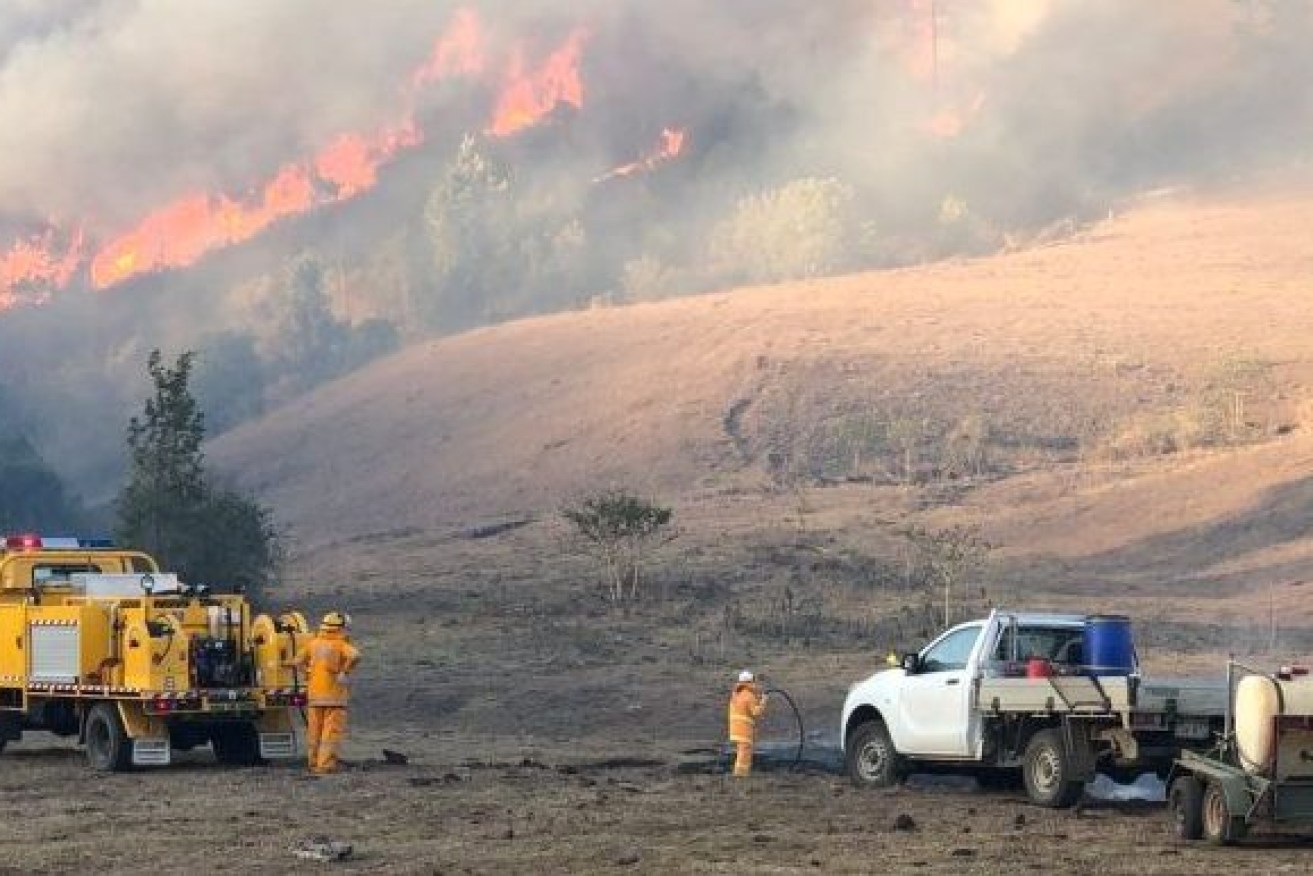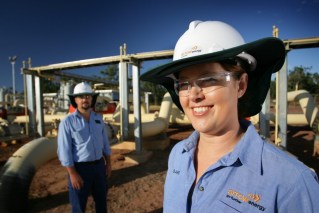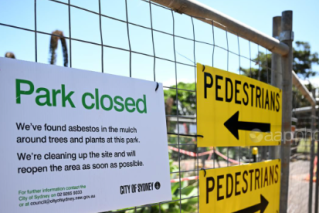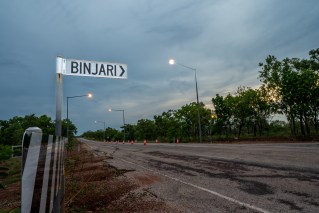Environment threat to ‘tree-change’ and ‘sea-change’ dreams
Scattered housing in “at risk” areas must be replaced with sustainable resilient community models, according to experts.

A return of El Niño could mean more bushfires Photo: ABC
In the aftermath of out-of-control bushfires once again devastating parts of Australia, this time in the west, researchers say we cannot continue rebuilding in “at risk” areas.
“Sea-change” or “tree-change” settlements “scattered” along coastlines or into bushland are often more vulnerable to extreme weather events, involve more energy intensive lifestyles, and can stretch emergency services during crises.
The researchers have argued their case in a paper published today in Nature Urban Sustainability.
They say zoning must change to prevent future development in at-risk areas, and planning and rebuilding should focus on community models that can serve as blueprints for our transition to climate-resilient towns and cities.
Barbara Norman, director of Urban and Regional Futures at the University of Canberra, was one of the paper’s authors.
“With the increasing potential for extreme events in the future, it’s adding a very strong argument to again be revisiting our planning,” said Professor Norman, who lost a family home in Mallacoota in the 2019-20 bushfires.
Bushfire recovery coupled with a migration to regional areas during the pandemic means there is a significant opportunity to put in place design principles now to future-proof our communities, Professor Norman said.
“Business as usual will not work … ignoring this issue is not helping anyone,” she said.
“[We can take] this opportunity to build world-class, environmentally sensitive developments.”
Allowing housing to spread into areas at risk of extreme weather events will do people more harm than good in the long run, Professor Norman said.
Building houses in risky areas not only exposes people to danger, but insurance companies will continue to either increase premiums or refuse to insure properties at all.
“The really tough question of resettlement will be the next big issue, both globally and locally,” Professor Norman said.
“Ignoring it and not having a discussion about this tough question would not be helping those communities.
“Leading people with fear is an awful thing to do, but sitting down and leading people in a constructive way is a very positive thing to do.”
After being hit by floods in 2019, residents of a Townsville housing complex were faced with a 30 per cent hike in insurance premiums.
This was after their annual insurance premium had already soared from under $30,000 to more than $150,000 in a decade.
More Australians are not only facing exorbitant insurance bills, but forecasts from Climate Risk in 2019 found that up to 720,000 Australian addresses would be in an insurance “red zone” — uninsurable — by the end of the century.
Climate Valuation is an international company operating in Australia that assesses the future risk posed to properties by climate change for potential homebuyers, as well as banks and insurers.
Insurance companies and money lenders are looking closely at climate change risk and how it will affect property values, Climate Valuation chief executive officer Karl Mallon said.
“In 2020, we did 4.5 million mortgage assessments for banks. We work in the UK, Australia and New Zealand, [so] just to be very clear, this stuff is being asked for and paid for by mortgage lenders,” Dr Mallon said.
“This information is being asked for and used, and homeowners need to wake up very quickly and get on top of this.”
Of the assessments they do for potential homebuyers, according to Dr Mallon, they find about 10 per cent of properties face some sort of future climate risk.
That 10 per cent can be split into three categories: where measures can be put in place by the homeowner to avert the risk, where measures must be put in place by council to avert the risk, and where the risk is unavoidable, such as sea-level rise on a beachfront property.
For people who inadvertently purchase a home where there is an unavoidable future risk, they will be left with a worthless property in a few decades, Dr Mallon said.
“What we don’t want is people to lose their property value through the death of a thousand cuts; that’s what will happen and it’s the stupidest outcome.”
But there’s a solution to that problem if we act now, he said.
By identifying properties that will be uninsurable or uninhabitable down the track and putting a small levy on rates now, those homeowners can be financially assisted to relocate when the time comes.
The relocation funds allocated to that property from the levy would be transferrable, meaning the house could be sold in the meantime and the relocation fund transferred to the new owner.
“[It’s] basically saying, ‘we’re not letting you sell lemons into the market anymore,’” Dr Mallon said.
“You can provide residential zoning for say 30 or 50 years. From that point it will not be rezoned and it will be turned into mangroves or something [and] you collect rates for a transition fund … so you can move to a place up the hill.
“Everything is solvable as long as you look the problem in the eye.”
As well as lenders and insurers, millennials who have grown up with climate change are increasingly factoring climate risk into their investment decisions, Dr Mallon said.
“It used to be only the council knew this stuff, and if you could get the council to shut up, no-one knew it. Now you can get a report on this stuff for a few hundred bucks.
“For those that do [get this information], they’re going to make shrewd decisions and they’re not going to buy stuff in at-risk areas.”
‘National policy needed’ to stop developers passing on risk
In their paper published in Nature Urban Sustainability today, the researchers outlined a series of guiding principles that rebuilding and development must be based upon. They are:
- “retreating” from at-risk areas, and rebuilding in communities, rather than in isolated, scattered housing
- creating more localised energy systems, such as renewables with local battery storage, which can reduce the risk of communities being cut off from power during extreme weather events
- incorporating Indigenous knowledge of seasonal burning and engaging communities in ecologically oriented fire management
- reducing energy consumption of communities through electrified public transport infrastructure, and localised services and amenities that can eliminate the need for regular long-distance travel
- adopting passive cooling techniques in architecture, and outdoor spaces to reduce reliance on energy-intensive cooling.
But the biggest impediment to sustainable community building is the myriad conflicting interests at play in development, according to Griffith University climate change adaptation researcher Sarah Boulter.
Councils can face legal pushback from developers, as well as lost revenue, if they restrict where development can take place.
“Any time [councils] try to restrict development, they’re likely to end up in the planning court,” Dr Boulter said.
“For a developer, they pass that risk on. So who’s responsible if you buy a place on the coast that then gets washed away? Is it the council or the developer?”
At the same time, telling people who have never experienced a natural disaster that they can’t live right by the beach or in the bush is an unpopular agenda for councils to push, Dr Boulter said.
“You have to convince people that it’s like insurance: you hope to never use it, but you’re insuring against it happening.”
On the flipside, it can be very difficult to convince people who have been recently traumatised by a bushfire or other natural disaster that they need to relocate.
Rather than putting the onus on councils to implement these measures, leadership must come in the form of a national policy framework, Dr Boulter said.
“While a lot of work happens at the grassroots community level, you’ve got to have some commitment at the higher level to say this is how we want our [future] communities to look,” she said.
“It comes down to our leadership to say, ‘we have to look at all these risks.’”
But as the risk of climate-change-related disasters have increased, there has been no unified policy to guide adaptation and mitigation, the researchers argued.
“The Australian government response to climate change since 2013 has been arguably one of systemic dismantling of action on both mitigation and adaptation,” they wrote.
“As a consequence, there has been a general devolving of responsibility to the subnational level, resulting in a patchwork of initiatives rather than an integrated climate response.”
– ABC / environment reporter Nick Kilvert












